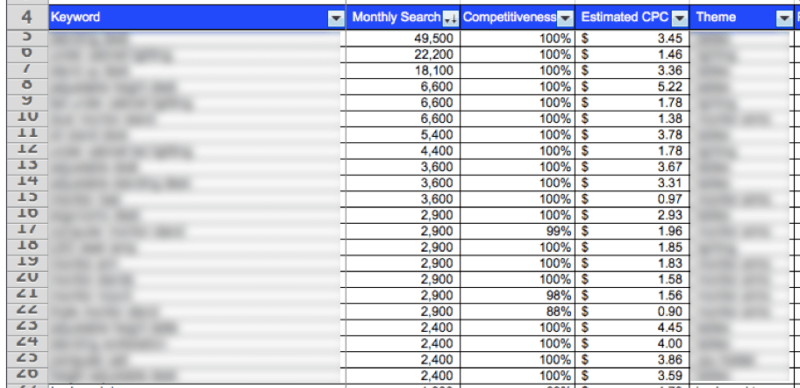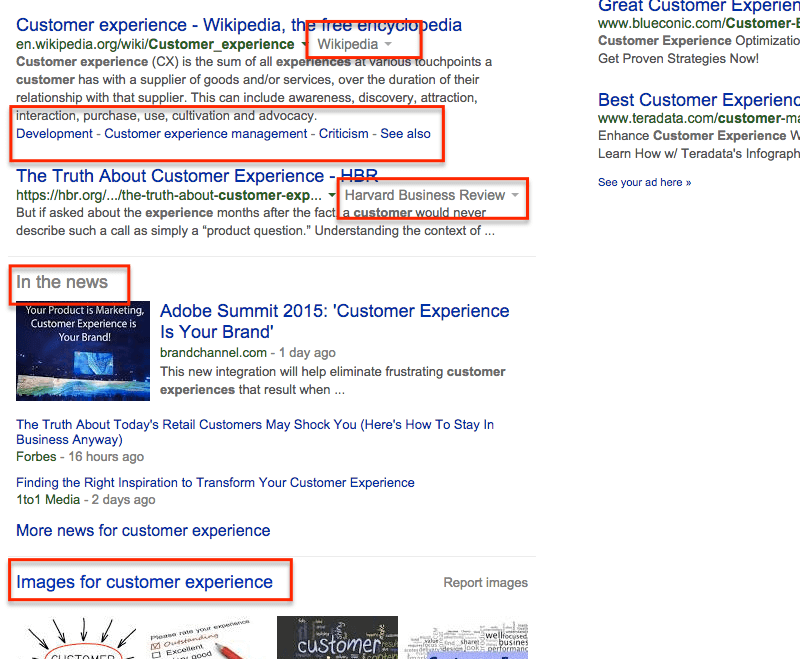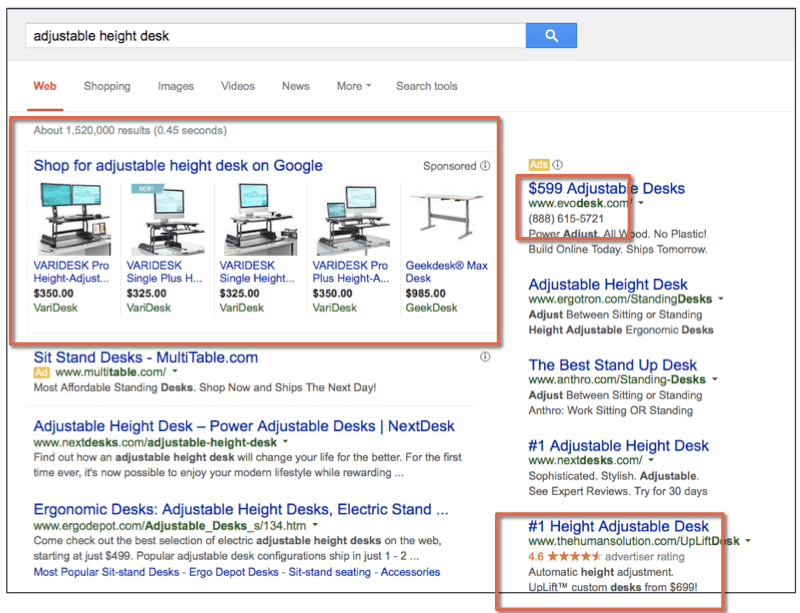How Search Result Analysis Leads To A Better SEO Program
Columnist Derek Edmond reminds us that sometimes we get so busy with the execution of ongoing SEO tactics that we forget to step back and review the actual content experience competitors have to offer.

How often do you go back to determine the type of content that appears in search engine results for your priority keywords and phrases?
A few months ago, one of our clients posed an interesting challenge: they wanted to expand their online product offerings but were concerned with the level of viability those offerings would have for organic search performance. They wanted to better understand how the search engine result landscape could impact marketing strategy and tactics.
Some of the search-specific concerns expressed:
- Type of content assets that appeared to perform best in organic results for a strategic set of keyword targets.
- Type of user experience prevalent for content assets uncovered.
- Type of competitors or distributors already present in these organic results.
This initiative provided the opportunity for us to thoroughly re-examine keyword strategy as it pertained to the direction of content marketing initiatives. And while this was one instance where we really were able to invest considerable time and energy in specific results, its a practice that can be applied to ongoing SEO programs as well.
Here are the steps we took in development of our program and examples of results and actions realized.
Identify A Priority Keyword List
The first step is almost always the identification of a specific set of keyword targets. In this case, we wanted to identify a priority set of themes and phrases associated with a core set of product lines and business needs.

Example Keyword Workbook
If we were to tackle this initiative as a component of an ongoing program, we would focus on a particular theme, like a solution offering or concept popular in the target market.
The key is to create a manageable list based on resources. Usually, we will highlight 20 – 30 related opportunities for review.
How do you go about prioritizing your list? Here are metrics to consider:
- Monthly search estimates, estimated CPC, and competitiveness from Google Keyword Planner.
- Impressions, clicks, click-through rate, and conversion-specific metrics from Google AdWords.
- Social popularity metrics such as hashtag usage, conversations, etc., using tools like BuzzSumo.
- Keyword targets identified in existing, priority content marketing assets.
Tools of the Trade: Here are some technology resources to consider when building out a priority keyword list:
- Google Keyword Planner and Google AdWords
- Ubersuggest
- SEMRush
- BuzzSumo
Once you have an agreed upon list, it’s time to dig into actual search engine results themselves.
Evaluate Organic Results

Points of Differentiation in Organic Search Results
Once a priority keyword list has been established, it’s important to evaluate the content marketing objectives of the web pages and associated organizations doing well for those terms in organic search.
When reviewing organic listings with an objective of defining content marketing priorities, consider the following types of criteria specifically:
- Domain and web page / web address
- Type or objective of content in each result
- Social sharing and inbound link metrics
- Presence of structured data and blended results
The second bullet — type and/or objective of content — is the critical piece of analysis in this exercise. We’re looking to identify patterns in content objectives in an effort to define requirements and competitive best practices.
Tools of the Trade
- SEMRush
- Moz Analytics
- LinkDex
Evaluate Blended Results

Evolution of Google Search Results
Don’t forget aspects of Google search beyond the traditional “ten pack” of organic listings. Google Knowledge Graph panels are increasingly prevalent in organic results across the various types of keyword searches, with some estimating that 25% of all search queries now show a Knowledge Graph-based result. Similarly, a study run by Stone Temple Consulting (and covered earlier this year on Search Engine Land) found that 19.45% of 850K search queries tested triggered direct answers.
The results themselves need to be evaluated to determine where competitors can stand out and differentiate information presented.
Partially due to the integration of structured data, Google is able to provide a more dynamic search results page experience, and searchers will find everything from ratings to site-specific cross-links within individual organic and paid search engine listings.

Potential Examples of Structured Data
Furthermore, as detailed in an article on Search Engine Land late last year, a new Google eye tracking study outlines the evolution of Google search results from 2005 to today. Searchers are now looking outside of the “golden triangle” of top organic results when performing Google keyword searches.
The key takeaway?
While content development is a critical element of organic search performance, how the website and web page are structured can also play a part. More importantly, you should make an effort to understand how Google might manage the search experience and limit or provide new opportunities for SEO development.
Evaluate Paid Results
Google AdWords information can often lead to interesting supporting analysis as well. AdWords results provide insight into the type of content marketing assets marketers believe searchers will want to obtain and the level of sophistication in the advertising space.

Differentiation in Paid Advertising
Points of observation to consider:
- Ad copy, types of promotion, and types of content marketing assets offered through advertising
- Types of advertisers (examples might include manufacturers, distributors, lead aggregation sites, etc.)
- Landing experience and potential conversion goals
- The type and level of ad extension usage realized in ad copy
- Presence of Shopping results and associated advertising extensions
- Potential AdWords estimates on monthly search volume, cost per click, and competitiveness, among other advertising indicators
Tools of the Trade
- SEMRush
- SpyFu
- Google Keyword Planner (and AdWords)
Draw Formidable Conclusions
It all culminates into the type of assessment made when evaluating information collected. Here are a couple examples of how we’ve been able to change direction and results for clients, based on this type of analysis.
- In the development of one client’s new site structure, this type of analysis forced development’s hand when it pertained to what type of landing experiences they were focusing on. Our research illustrated the vast majority (over 70%) of search results found for priority keywords were of a certain content type. We influenced management direction for refocusing development on new templates designed to improve usability and impact of these types of content assets.
- For an ongoing SEO-centric content marketing initiative, this type of analysis enables our SEO and content teams to collaborate on regular blog and article related material, in a manner that creates more clarity in expectation, for content performance and anticipated outcomes.
In the example leading this column, our search analysis showcased for our client how critical the emphasis on certain types of content elements would be. Two types of content were found nearly 80% of the time (roughly a 50-50 split) in our evaluation of keyword targets.
More importantly, this analysis helped our client realize that their distribution networks were highly visible for many of the keywords identified. As a result, if they could work in greater coordination with these distributors to improve their position in paid and organic listings through supporting content development, it might make more sense strategically and in the long-run.
Final Thoughts
Many of the “Tools of the Trade” referenced help automate the research process and collect data in a more streamlined fashion; done manually, this type of work can take several hours, if not days or weeks.
The next step, of course, is client (or manager) buy-in, with respect to the presentation of findings and definition of “next steps.” No doubt this can be a challenge in and of itself!
What type of content marketing analysis are you performing to deliver greater SEO impact? I would love to read your thoughts and perspective via comments below.
Contributing authors are invited to create content for Search Engine Land and are chosen for their expertise and contribution to the search community. Our contributors work under the oversight of the editorial staff and contributions are checked for quality and relevance to our readers. The opinions they express are their own.
Related stories
New on Search Engine Land